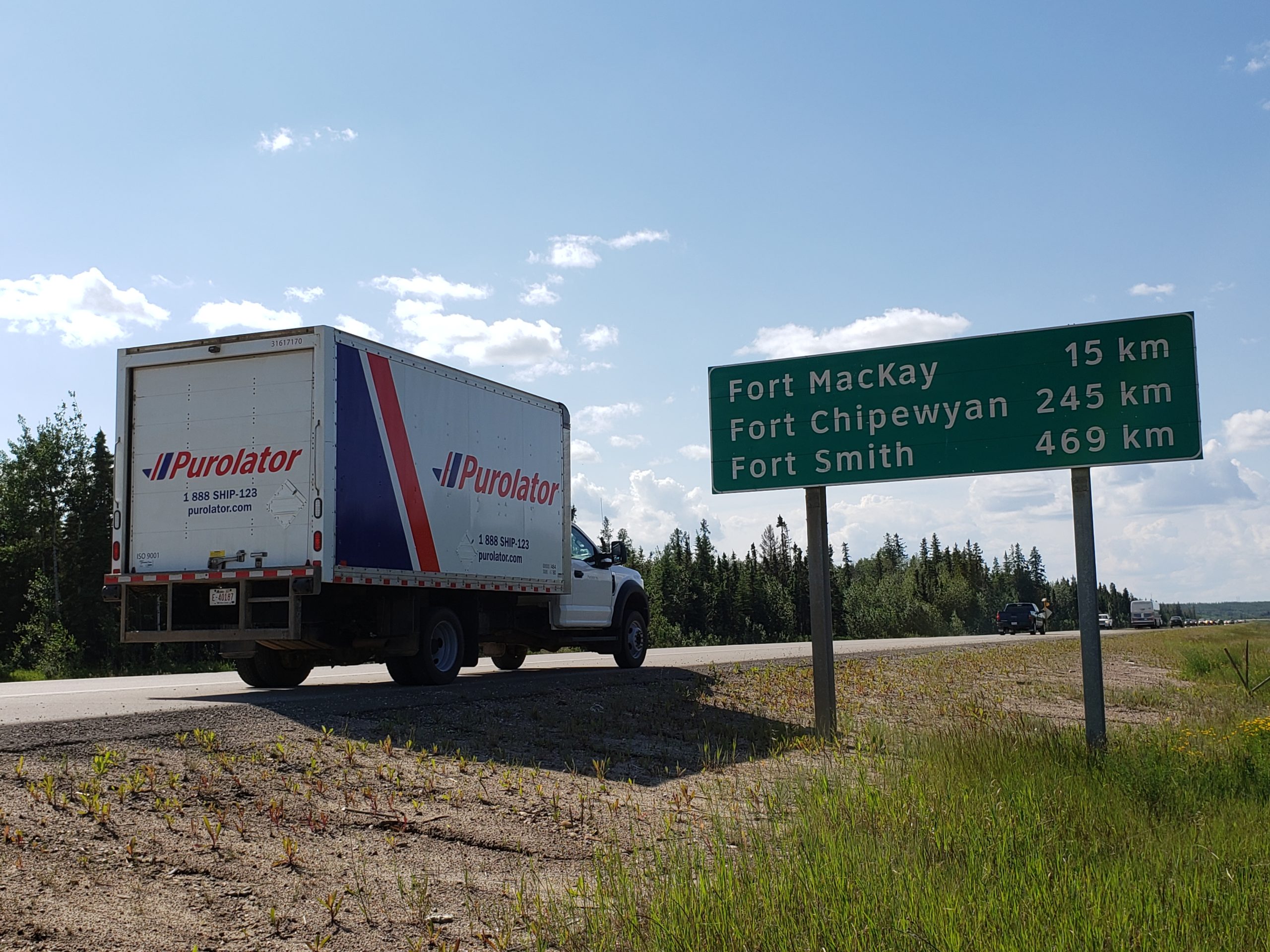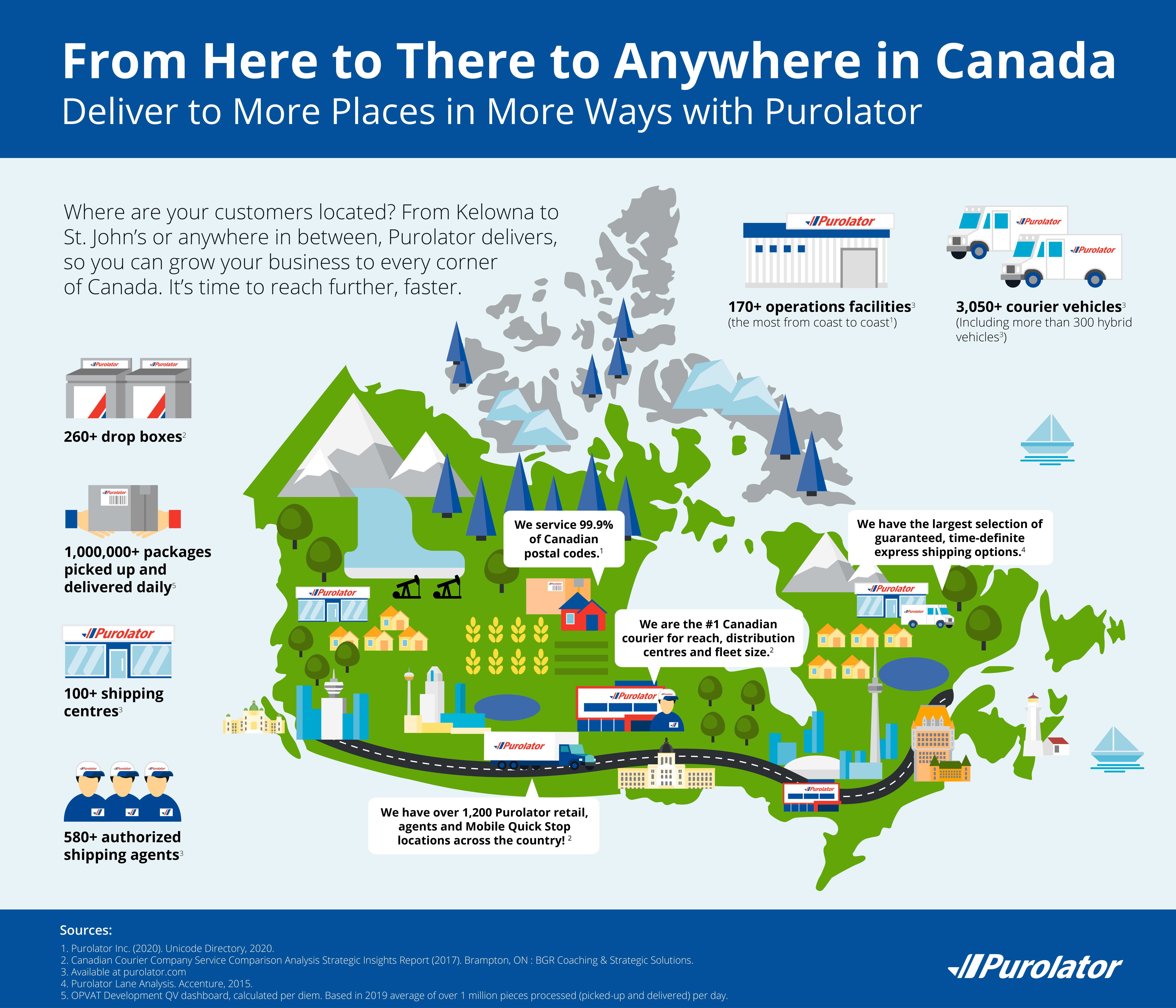From building materials to mining logistics, getting equipment and parts to rural areas is essential.
As the second-largest country globally, there’s no shortage of logistical obstacles when it comes to delivering shipments within Canada.
Mountains and forests, extreme weather conditions, vast distances and single-lane highways all present unique challenges to the delivery process. Some locations, like Nunavut, have no roads at all, and a considerable portion of the country is difficult to access in the wintertime due to heavy snowfalls or dangerous icy roads.
As a result, getting industrial equipment or parts to rural areas requires a bit more planning, as well as sophisticated logistical solutions.
In this post, we answer your questions about shipping to rural areas in Canada.
What is considered a rural area?
While there’s no universal definition for a rural area, a rural area in Canada is considered to be any community with a population under 1,000 (or fewer than 400 people per km2).
Small towns, villages, agricultural or wilderness areas as well as undeveloped or non-developable lands are considered rural in Canada and account for most of the landmass.
What materials can be delivered to a rural area?
Thanks to its rich supply of natural resources, a lot of mining and forestry occurs in the rural areas in Canada. For example, gold mining in Northern B.C., petroleum production in Fort McMurray, diamond mining in the Northwest Territories and iron ore mining in Labrador City are essential components of Canada’s industrial sector.
This industrial work requires machinery, supplies and industrial parts and equipment to equip workers and extrapolate materials.
Moreover, an increasing number of people are moving away from urban centres and into rural communities. With lower prices, natural beauty and more space, remote communities are becoming a viable and attractive option for many Canadians. Toronto, Vancouver and Montreal have seen population decreases during COVID-19, where families moved to quieter surrounding regions. These moves require manufacturers to alter supply chains due to demand. Building materials, plumbing and electrical supplies and consumer goods are all needed to make remote living more feasible for Canadians.
Purolator saw a year-over-year increase of more than 65% for shipments going to remote locations in 2020.
What options are there to ship to a remote area?
There are multiple options for shipping remotely, depending on the distance, the cargo, the speed required and land or weather conditions.
Shipping modes of transport include:
- Courier – For smaller parcels, solutions include same-day or next-day expedited shipping for last-mile deliveries
- Air – For urgent deliveries or deliveries to locations with no roads, in the northern regions of Canada, for example, deliveries by air are the best solution.
- Freight – For large shipments, including industrial equipment and parts, our freight solutions include TL (truckload), LTL (less-than-truckload) and expedited or standard delivery times.
- Rail – For cross-country, far North or less time-sensitive shipments, standard rail services are ideal.
- Boat – For islands and coastal areas, for example, the Maritimes, British Columbia or far north regions, boats are necessary for an intermodal delivery solution.
How can you get fast and reliable delivery to rural areas?
Many industrial shipments are needed on a J.I.T (Just-in-time) basis. If you can’t find a delivery provider to move a shipment on schedule, this could lead to delays that increase the processing time while also increasing inventory holding costs.
It’s crucial that you find a delivery partner that’s experienced with rural shipments and is well-equipped for a variety of delivery timeframes. Some delivery providers can offer urgent shipments regardless of the location due to their extensive networks and transportation services. In contrast, others don’t have the network or transportation capabilities to accommodate J.I.T shipping, especially for rural areas.
When machinery breaks down and requires new parts immediately, next-flight-out solutions with visible tracking are needed. Work with a delivery partner with flexible, expedited shipping solutions to ensure that your most urgent deliveries arrive fast, even in remote locations.
As a best practice, use a delivery provider with a variety of options for urgent shipping and cost-effective solutions for less time-sensitive shipments.
How can you get a cost-effective delivery service to rural areas?
For cost-effective deliveries to rural areas, work with a shipping partner that offers an extensive ground delivery network. These delivery providers are less reliant on third parties so they’re less likely to hand off shipments — a process that can be costlier, riskier and reduce tracking transparency.
Delivery providers that service limited areas may also be costlier if they choose to drive the entire distance themselves. You’d not only pay for the cost of delivery, but the return to the depot as well.
Instead, a more cost-effective option is to use a delivery provider with a substantial closed-loop network with direct delivery capabilities.
Purolator delivers to 100% of all postal codes in Canada.
What is the fastest option when shipping industrial equipment from Canada to the U.S.?
Industrial shipments often require J.I.T shipping. Because of the time-sensitive nature of mining and oil production, express delivery can save time and money. Not all delivery providers can provide express delivery to remote areas. Look for a provider who can work with you to deliver your equipment on time, no matter where it’s heading.
As a best practice, use a delivery provider with experience shipping industrial equipment and offering a variety of options that can cater to urgent shipping or provide ground shipping when a more cost-effective solution is required.
How should equipment be packaged to ensure its safety throughout the journey?
Improper packing and storage are among the most common causes of cargo damage. Still, there are various materials available for shipping or storing industrial equipment, each with its own strengths.
Exterior packaging materials can be made from plastic, steel or wood.
Plastic packaging is ideal for medium-weight or heavy goods, as it can handle large weights. Plastic is easy to clean, lightweight and customizable, and plastic containers are great at protecting the contents from environmental elements.
Steel containers are durable and protect their contents from impact. Like plastic, steel containers are customizable and durable against rough handling or other hazards during transport.
Wooden crates are sturdy and can withstand pressure. Wooden crates are highly customizable, lightweight and cost effective.
When considering exterior packaging, be sure to consider the environment in which your shipment will be delivered. Is insulation required? Are the packages likely to get wet? If you’re unsure of the best approach, a good delivery provider will be able to guide you and provide you with the best materials for packaging your shipments.
Does Purolator deliver to rural addresses?
It’s essential to work with a trusted delivery provider that understands the complexity of shipping heavy machinery and has experience with rural and cross-border shipments.
Purolator offers the following solutions:
- Variety of time frames, including next flight out, next day and freight or ground transportation
- Provides certified dangerous goods specialists
- Cross-border expertise and support
- Vast network in Canada and the U.S.
- Deliveries to a variety of destinations, including job sites, locker boxes and map marker coordinates
Find a delivery partner who provides rural shipping solutions
When you’re considering shipping industrial equipment to rural areas, there are many factors to consider, including timeframes, weather conditions, packaging requirements and the destination. It’s crucial to secure an efficient delivery, especially when time is of the essence and shipments are needed for destinations with no fixed address. That’s why it’s so important to choose a delivery provider who’s able to assist you through every leg of the journey. Rural shipments can be reliable shipments when you work with the right delivery partner.

